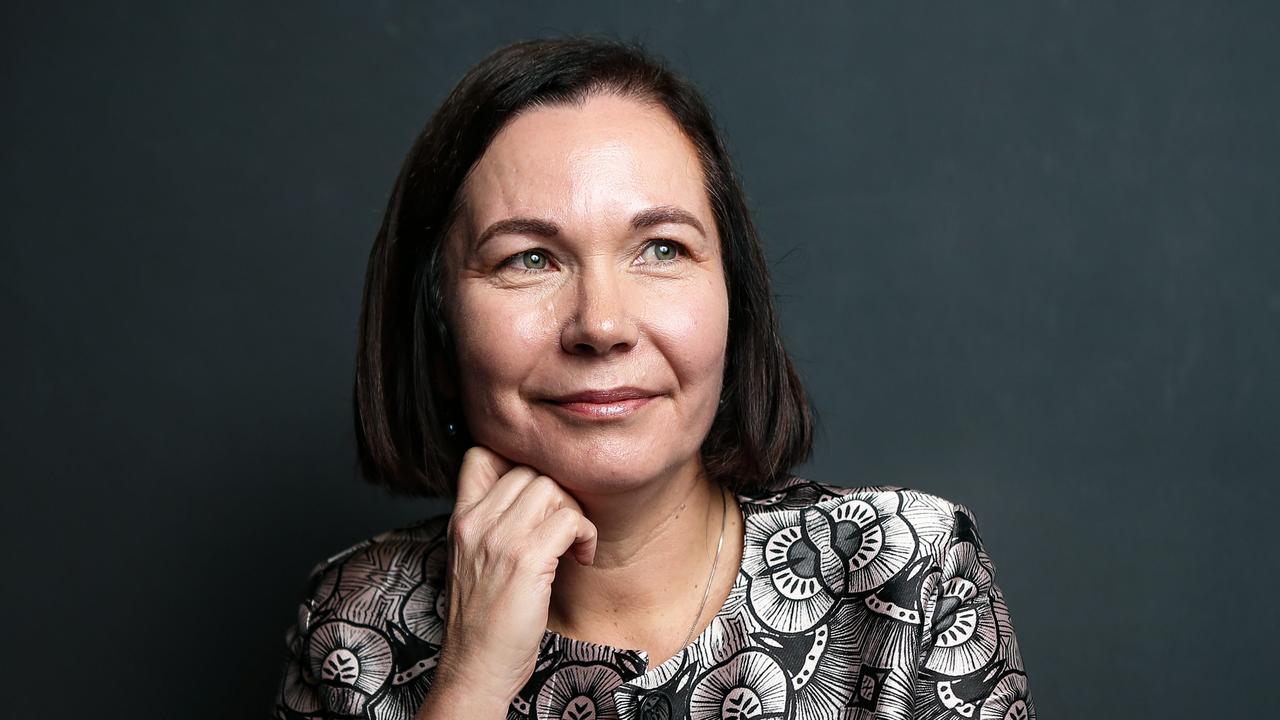Stop the waste: let our people govern

IF you drive 325km northeast of Alice Springs through a region named Utopia you’ll reach the remote Aboriginal community of Ampilatwatja and its donkey-proof fence.
The fence was built and funded by government to keep the local herd of wild donkeys out of the town and at the same time provide unemployed adults with something to do building it.
So it might surprise you that donkeys still wander freely through Ampilatwatja (pronounced m-bludder-witch). The bureaucrats, service providers, consultants and contractors involved in the fence’s construction never thought to install cattle grids on the roads and it was never finished.
The donkey-proof fence was a waste of money. It didn’t help people move from welfare to work. It didn’t create real jobs or contribute to building a real economy. It didn’t even stop the donkeys.
There are many, many examples like this in Ampilatwatja.
If you ever wonder how governments could have spent more than $40 billion in the past decade on indigenous-specific programs, without improving the lives of indigenous people, look no further than Ampilatwatja’s donkey-proof fence.
Ampilatwatja is the central location for John Pilger’s film Utopia. The film presents a damning criticism of Australia’s treatment of indigenous citizens. The Ampilatwatja scenes show Third World living conditions in which preventable diseases thrive. Pilger’s message is that “apartheid is deep within Australia’s past and present”.
The film’s title is ironic of course. Utopia is the ideal society in Thomas More’s 16th-century book, as well as a region in Central Australia which is home to a few thousand Alyawarr and Anmatyerre people living in small homeland communities. The film’s title represents paradise to contrast what Pilger sees as a living hell.
Ampilatwatja isn’t actually in Utopia. It’s about 100km farther north, in Alyawarr country. Artistic licence may serve Pilger’s political message, but his depiction of indigenous Australia is about as insightful as his geography.
Most viewers of Utopia have never been to a remote indigenous community. Few understand what they’re seeing in Pilger’s film, how it has arisen and persisted or how it can be remedied. Without this understanding, they’re left to fill in the gaps themselves. Most will arrive at one of two conclusions.
Some viewers will conclude that communities such as this aren’t viable and should be closed. The film paints a picture of such despair that some will think the only compassionate thing to do is shift the Alyawarr people to a larger population centre where they can have a better standard of living. This would be disastrous, like every other removal of Aboriginal people from their traditional lands to the urban fringes has been.
Pilger doesn’t help dispel this conclusion. He believes the Europeans who named Utopia either had a very acute sense of irony or were “demented” by the fury of the heat. Perhaps he didn’t appreciate the breathtaking beauty of Australia’s Central Desert or understand how a place of such extremes can be a people’s essence and very being, as it is for the Alyawarr people. They’ve lived there for thousands of generations and don’t want to leave.
This is their ideal society.
Other viewers will conclude that government hasn’t invested in Ampilatwatja and needs to go in and spend whatever it takes to improve the community. Yet government has invested — huge sums in fact. It’s the strategy that delivered the donkey-proof fence.
I stayed in Ampilatwatja last month. I listened to community members and health workers and spoke with male and female elders. I spent time understanding how things operate in Ampilatwatja and the wishes and aspirations of the Alyawarr people for their country.
For me, the visit confirmed that we’ve got indigenous affairs and spending all wrong for the past several decades. Social housing in Ampilatwatja is just one illustration of this.
Last year, government built nine new houses in Ampilatwatja. In an environmental health assessment earlier this year, 31 houses in Ampilatwatja were inspected, including six of the new houses. Not one of those 31 houses has a compliant effluent-disposal system. However, they all have new satellite dishes installed during the conversion from analog to digital TV. Pilger’s film features a home with an outhouse bathroom that has a blocked toilet and no sink. That house also has a new satellite dish.
The nine new houses replaced nine existing dwellings, which were demolished and dumped at the tip. They were solid structures that could have been repurposed. This would have been sensible in a community where some small homes sleep 30 people. No one asked the community if they wanted the existing houses demolished.
Many Ampilatwatja homes have cockroach infestation. Pest-control services are engaged to treat the problem but I’m told the service providers don’t complete the follow-up treatments required throughout the year.
So the service provider is paid but the cockroaches remain.
A few years ago, the government engaged consultants to run a four-day training program for Ampilatwatja women on cleaning and hygiene, which cost more than $56,000. Content included the cleaning of bathrooms and use of septic systems.
Each day ended with a “fun women’s activity” such as “nails” or “hand massage”. I’m told barely a dozen women attended days one and two, and no one showed up after that.
Apart from being patronising and sexist, the program did nothing to address the main environmental health risk factors of poor housing conditions and chronic overcrowding. Septic systems fail because they aren’t built to service the sheer number of people, not because of misuse.
The abysmal state of housing in Ampilatwatja isn’t from a lack of spending. It’s from poor planning and management by people who aren’t from the community, don’t understand its needs, frequently don’t follow through and who don’t think locals are capable of doing it themselves.
Ampilatwatja has a government engagement officer, Centrelink office and Jobs Services Australia provider stationed in the community. I expect these service providers would tell you there are no jobs in Ampilatwatja.
Apart from the jobs they and other non-locals do of course.
Ampilatwatja has a school, with several full-time staff. It has an art centre with two staff.
None of these jobs is performed by locals. Every time something needs repairs, someone comes in from Alice Springs or Tennant Creek or beyond. You have to wonder what the JSA service is doing there every week.
The attitude to communities such as Ampilatwatja hasn’t really advanced beyond the mission-manager mentality of the 1960s: that Aboriginal people need a caretaker.
Whether that caretaker is a protector; or a government department; or an Indigenous Engagement Officer or a Government Business Manager, the same mindset sits behind it — that Aboriginal people are incapable of taking care of their communities, their families or themselves.
Yet the Ampilatwatja community has a better track record than most of them combined.
The Ampilatwatja Health Centre is owned and controlled by Alyawarr traditional owners.
Like other health providers across Australia, its gets revenue from bulk- billing patients. It hires a chief executive and other staff and is well-resourced and equipped. In the past few years, it has hired eight locals who are now completing vocational training certificates.
The traditional owners also own the store, a small supermarket as good as any you’ll find in smalltown Australia.
The Alyawarr people have done more than the government or JSA has achieved, creating real jobs and real businesses.
Some locals are skilled in building and repairs and have built houses using their own materials. Some have constructed buildings using materials from the demolished houses retrieved from the tip.
Alyawarr people have ideas for businesses and other initiatives. While money may be needed to progress these ideas, the biggest obstacles are usually red tape, bureaucracy, structural barriers and getting approvals; even for Alyawarr people doing things on Alyawarr land.
I was impressed with the momentum and far-sighted thinking of the Alyawarr people. Quite frankly, I was inspired.
Alyawarr elders have a vision for the future of their communities, one where the Alyawarr people are responsible for their own destiny, for decisions affecting their land, for culture, heritage and the continuation of their language, for the education of their children and for the conditions of their communities.
In their own words, they want to wake up the Alyawarr nation.
Instead of telling the Alyawarr people what they’ll get and delivering it poorly, governments should ask the Alyawarr people what they need and what their aspirations are for their communities.
When governments do fund infrastructure and services on Alyawarr land, instead of engaging outside companies and contractors, contracts should be awarded to local businesses all down the supply chain. And the Alyawarr people can insist on it. They don’t have to accept government services and other offerings on their land. If they’re not happy with what government is offering, they can refuse it.
I know a remote Aboriginal community where the contractor engaged to rebuild the school wouldn’t hire locals. So the clan leader told the contractor to pack up his tools and leave. He refused permission to be on his clan’s land unless the contractor hired locals.
This triggered a lengthy stand-off between the government, the department, the contractor and the community, and tough discussions ensued. Eventually, the clan leader got what he wanted. Sometimes people don’t realise the power they have until they have the courage to say no.
There can be a future for Ampilatwatja where people have real jobs and there’s a real economy. It can start with the activities already happening in the community which are performed by outsiders.
Saying there are no locally skilled people isn’t an excuse. Instead, identify what has to happen to ensure those skills do exist in the community.
This may involve an Alyawarr-controlled business hiring external staff (as the health centre and supermarket have done), targeting training towards specific skill sets and/or requiring outside suppliers to employ or partner with locals, enabling a skills transfer.
Saying locals don’t want to work isn’t an excuse either. Quite frankly, I don’t believe this; and the health centre’s success at local employment suggests otherwise.
But if there are some people who don’t want to work or train for a real job, Centrelink should cut off their unemployment benefits. That will sort out the issue pretty quickly.
Pilger does well at generating outrage but he offers no solutions. And I’m pretty sure the solutions I’ve outlined aren’t what Pilger’s fans want to hear.
I suspect the Alyawarr people think differently.
Anyone can stitch together the worst of our history — or the best of it — and paint whatever picture they want.
Australia is no more bigoted than any other country and far less bigoted than most.
There’s no apartheid in Australia. The Alyawarr people choose to live on Alyawarr land and have done so for thousands of years.
Poverty doesn’t persist in Ampilatwatja because of racism, segregation or “apartheid” and it isn’t caused by a lack of government investment.
Poverty persists because we treat communities such as Ampilatwatja like dependent children and smother them in a bureaucratic mire. Let’s start treating them like adults.
Nyunggai Warren Mundine is managing director of NyunggaBlack business advisory service and executive chairman of the Australian Indigenous Chamber of Commerce.


